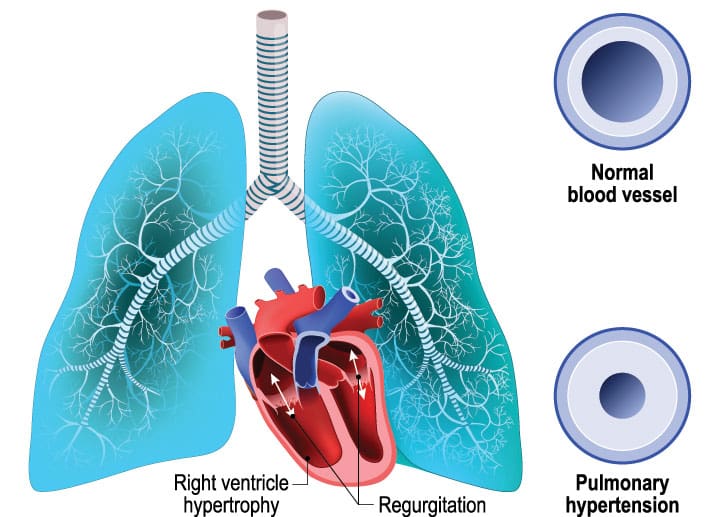Just Culture principles can help preceptors make better decisions.
Takeaways
- Use open communication to avoid attributing error to the incorrect cause.
- Apply the Just Culture framework to assess the root cause of an error.
- Distinguish between the three error categories (human error, at-risk behavior, reckless behavior) and how to coach in the aftermath.
This example demonstrates a scenario many preceptees encounter when the delivery of best practice collides with clinical urgency. Assuming that foregoing the skin prep was the “right thing to do” is an example of how workplace factors, like peer pressure and a change in the patient’s condition, can influence one’s actions. As a preceptor, you’re responsible for providing effective feedback and assessing the safety of the situation. However, you may struggle with the best way to provide feedback when errors occur.
Attribution error
Providing effective performance feedback is, in part, based on your ability to avoid attribution error—the human tendency to attribute motive and cause to a person’s actions and/or judgments. In other words, attribution errors involve creating “a story” when we don’t have the answers. In Nick’s case, the preceptor would make an attribution error if she attributed Nick’s actions to a lack of regard for policies or renegade tendencies. The reality is that unless the preceptor asks Nick about his actions, she won’t know what he was thinking and how that influenced his decision to abandon proper I.V. site preparation. The danger associated with attribution errors is that they can negatively impact your ability to fully and accurately assess a situation and provide meaningful feedback. Instead, reserve judgment and enter the conversation with an open mind.
Just Culture
In addition to awareness of attribution errors, a Just Culture framework provides preceptors with a nonjudgmental approach to assessing how errors occur. Taking into account that we’re all human and humans make mistakes, the Just Culture framework emphasizes a blame-avoidance, rigorous exploration of how people, process, and system practices can create an environment where unsafe behaviors emerge.
This approach is particularly important in nursing because the profession operates in a unique environment in which death can result from both errors and excellent care. This can create a challenge for preceptors who are responsible for coaching preceptees through situations where errors caused harm and then helping them recognize the events where, despite providing excellent care, the end was a negative outcome.
When applying Just Culture, three distinct error categories emerge: human error, at-risk behavior, and reckless behavior.
Human Error
Human error occurs when someone inadvertently does something wrong. Maybe his or her focus has shifted from the task at hand or he or she feels rushed.
Scenario: Bryan is in a hurry at the end of the workday and sees a new order for a medication he gave once earlier in the shift. Attempting to get everything done for the oncoming shift, Bryan doesn’t notice that the new order includes a different administration route. Assumptions and time pressure lead to this new nurse performing only four of the five rights of medication administration and giving the medication incorrectly.
At-risk behavior
At-risk behavior occurs when the preceptee believes he or she is doing the right thing but unintentionally increases the risk for an error. Nick, for example, thought that inserting an I.V. as quickly as possible was in the patient’s best interest; he didn’t recognize that abandoning proper skin prep increased the risk for infection. The key is that although risky behaviors are chosen, the intent is to benefit the patient.
Scenario: Cara is a new nurse. Her patient is hypotensive but her attempts to reach the physician are unsuccessful, the preceptor is off the floor, and other team members are busy with a new admission. Cara decides to treat the patient without guidance from seasoned staff and administers a fluid bolus, not recognizing that this may complicate the patient’s heart failure. Cara’s desire to provide appropriate, timely care overrules the need for experienced team member assistance.
Reckless behavior
Reckless behavior occurs when a person makes a conscious decision to ignore a norm, best practice, or policy and takes an unjustified risk. In these situations, the person knowingly violates the rules and makes a decision with little or no concern for risk.
Scenario: Lauren asks a colleague to co-sign a type and cross specimen while they’re at the nurses’ station. Lauren is making a reckless choice to disregard the hospital’s policy of obtaining signatures at the bedside. In addition, she’s intentionally jeopardizing her co-worker by asking him to participate in this risk-taking behavior and creating an unsafe situation for the patient.
Evaluate and identify
When an error occurs, don’t jump to conclusions; instead, channel your inner Sherlock Holmes and use Just Culture to systematically evaluate where the break downs occurred. Is the issue related to human error, at-risk behavior, or reckless behavior? When your evaluation identifies human error, preceptee discussions can include dialogue about presence and focus and how multitasking can lead to lack of concentration and errors. If you identify at-risk behaviors, the preceptee may need help developing critical-reasoning skills and recognizing how certain behaviors fueled by “doing the right thing” can lead to negative outcomes. In some cases, at-risk behavior may require corrective action, which will be determined in conjunction with nursing leadership. When you encounter reckless behavior, avoiding the attribution error is critical, but if the preceptee’s actions demonstrate an unjustifiable risk, the unit manager will determine the corrective action according to hospital policy.
Just Culture in action
Brenda, a nursing student on a busy med-surg floor, is on her twelfth shift with her preceptor Carlos. She’s feeling more confident in her nursing skills and has just accepted a graduate nurse position on the floor. Brenda is growing more comfortable with Carlos, who is allowing her more opportunities as they work together.
Brenda sees an order in the electronic health record (EHR) for a tetanus diphtheria (tDap) subcutaneous vaccination for the patient in room 28. She has given this vaccination unsupervised before and is fairly certain she recalls the procedure. Brenda lets Carlos know that she’s ready to administer the medication. He pulls the tDap vaccine from the medication dispensing unit and hands it to Brenda saying, “I’ll be back in just a second.” Assuming this means it’s okay to give the medication, Brenda enters the patient’s room and administers the vaccination intravenously. When Carlos returns, he asks Brenda if she’s ready to give the vaccination. Brenda tells Carlos that she’s already pushed it and charted it in the EHR. Carlos asks Brenda what she means by “pushed” and Brenda explains that she administered the medication intravenously.
After ensuring the patient is safe, Carlos has a conversation with Brenda to help him understand what happened. Carlos is aware of the potential for attribution errors and starts the conversation by describing that the purpose of this blame-free discussion is to better understand what happened and to learn from it. Carlos then asks Brenda to walk him through what happened. As Brenda describes the situation, Carlos uses his body language to convey that he’s listening—he doesn’t read incoming e-mail or texts on his cellphone, he keeps his arms uncrossed, and he maintains eye contact with Brenda. Recognizing this is the discovery phase and that he may learn about process or system breakdowns that played a role in creating the error, Carlos withholds his views until Brenda finishes.
 When Brenda is done describing the situation, Carlos provides blame-free feedback about what he just heard. He takes the opportunity to clarify points and ensures that he and Brenda both have the same understanding of what happened. Carlos learns that Brenda was aware that the patient has issues driving at night and had a 4-hour drive home. She wanted to get the medication to the patient quickly to avoid holding up discharge. Brenda heard Carlos say he would be back and thought that he meant that it was okay to give the medication. Brenda also acknowledges that she was thinking about a medication order for another patient and wasn’t concentrating properly on this patient.
When Brenda is done describing the situation, Carlos provides blame-free feedback about what he just heard. He takes the opportunity to clarify points and ensures that he and Brenda both have the same understanding of what happened. Carlos learns that Brenda was aware that the patient has issues driving at night and had a 4-hour drive home. She wanted to get the medication to the patient quickly to avoid holding up discharge. Brenda heard Carlos say he would be back and thought that he meant that it was okay to give the medication. Brenda also acknowledges that she was thinking about a medication order for another patient and wasn’t concentrating properly on this patient.
Based on what Brenda has described, Carlos identifies this as an at-risk behavior error. Although Brenda didn’t clarify with Carlos that it was okay to administer the vaccine without him, this wasn’t a conscious effort to disregard best practice. Brenda thought she was doing the right thing by helping the patient get discharged quickly. Brenda’s inexperience and pressure to hurry were both factors in her decision to administer the vaccine.
Using feedback to promote Just Culture
Precepting requires ongoing evaluation of each preceptee’s skill sets and learning abilities. Avoiding attribution error and using the Just Culture framework provides you with strategies for promoting a blame-free environment that empowers preceptee accountability, growth, autonomy, and excellence in both clinical care delivery and providing positive patient experience. (See 10 tips for successful precepting.)
The authors work at Barnes-Jewish Hospital in St. Louis, Missouri. Cindy Lefton is manager and researcher for patient experience in emergency services. Charlie Peterson is a clinical practice specialist in emergency services. Lefton also is vice president of organizational consulting at Psychological Associates.
Selected References
American Association of Critical-Care Nurses. AACN standards for establishing and sustaining Healthy Work Environments: A Journey to Excellence. 2nd ed. 2016. aacn.org/wd/hwe/docs/hwestandards.pdf
Aryee S, Walumbwa FO, Seidu EYM, Otaye LE. Developing and leveraging human capital resource to promote service quality: Testing a theory of performance. J Manag. 2013;42(2):480-99.
Barnsteiner J, Disch J. Creating a fair and just culture in schools of nursing. Am J Nurs. 2017;117(11):42-8.
Cialdini RB. Influence: The Psychology of Persuasion. New York, NY: Harper Business; 2006.
Getnet MA, Bifftu BB. Work interruption experienced by nurses during medication administration process and associated factors, Northwest Ethiopia. Nurs Res Pract. 2017;8937490.
Heider F. The Psychology of Interpersonal Relations. New York: John Wiley & Sons; 1958.
Lefton C, Lefton RE. Assessing and addressing preceptee behavior and motivation. In: Ulrich B, ed. Mastering Precepting: A Nurse’s Handbook for Success. 2nd ed. Indianapolis, IN: Sigma Theta Tau International; 2019.
Lucian Leape Institute. Through the Eyes of the Workforce: Creating Joy, Meaning, and Safer Health Care. Boston, MA: National Patient Safety Foundation; 2013.
Marx D. Just Culture Training for Managers: Healthcare edition 2.0. Plano, TX: Outcome Engenuity, LLC; 2012.
Monteiro C, Avelar AFM, Pedreira M da LG. Interruptions of nurses’ activities and patient safety: An integrative literature review. Rev Lat Am Enfermagem. 2015;23(1):169-79.
Potter P, Wolf L, Boxerman S, et al. An analysis of nurses’ cognitive work: A new perspective for understanding medical errors. In: Henriksen K, Battles JB, Marks ES, Lewin DI, eds. Advances in Patient Safety: From Research to Implementation, 1. Rockville, MD: Agency for Healthcare Research and Quality; 2005.
Salyers MP, Bonfils KA, Luther L, et al. The relationship between professional burnout and quality and safety in healthcare: A meta-analysis. J Gen Intern Med. 2017;32(4):475-82.
Ulrich B. Just culture and its impact on a culture of safety. Nephrol Nurs J. 2017;44(3):207-59.


















